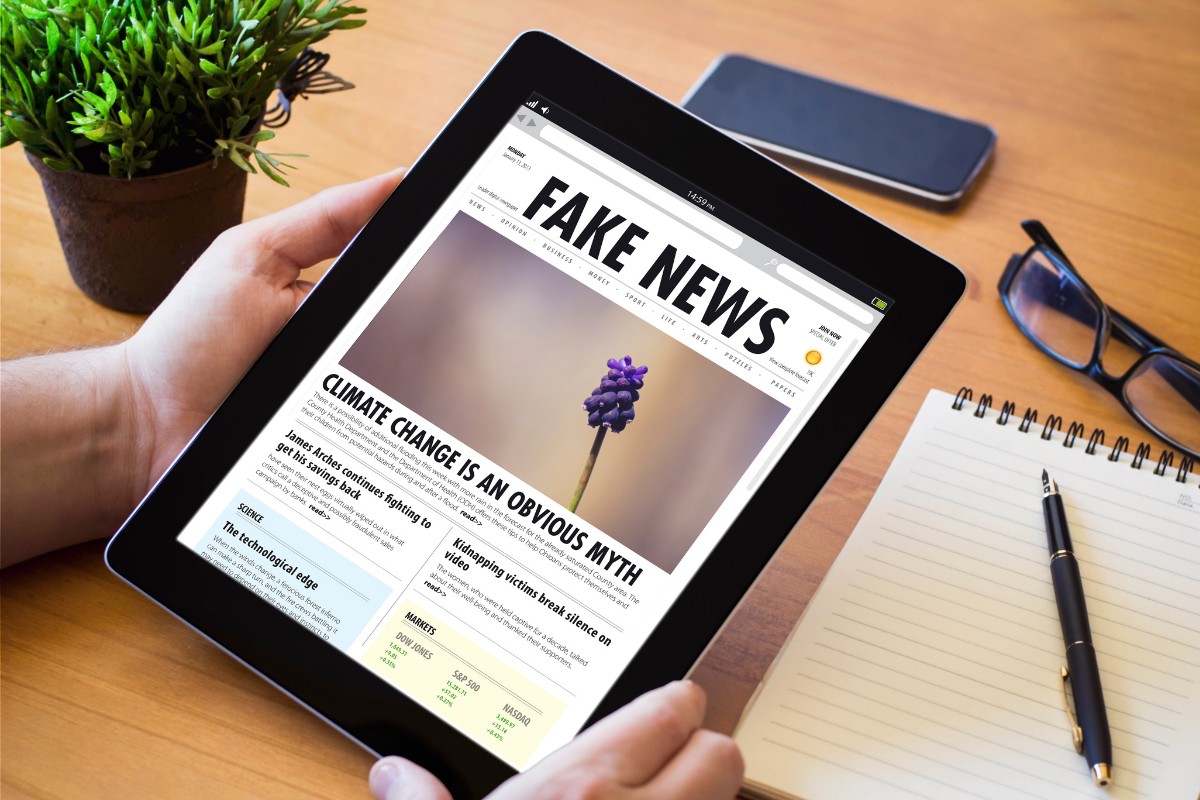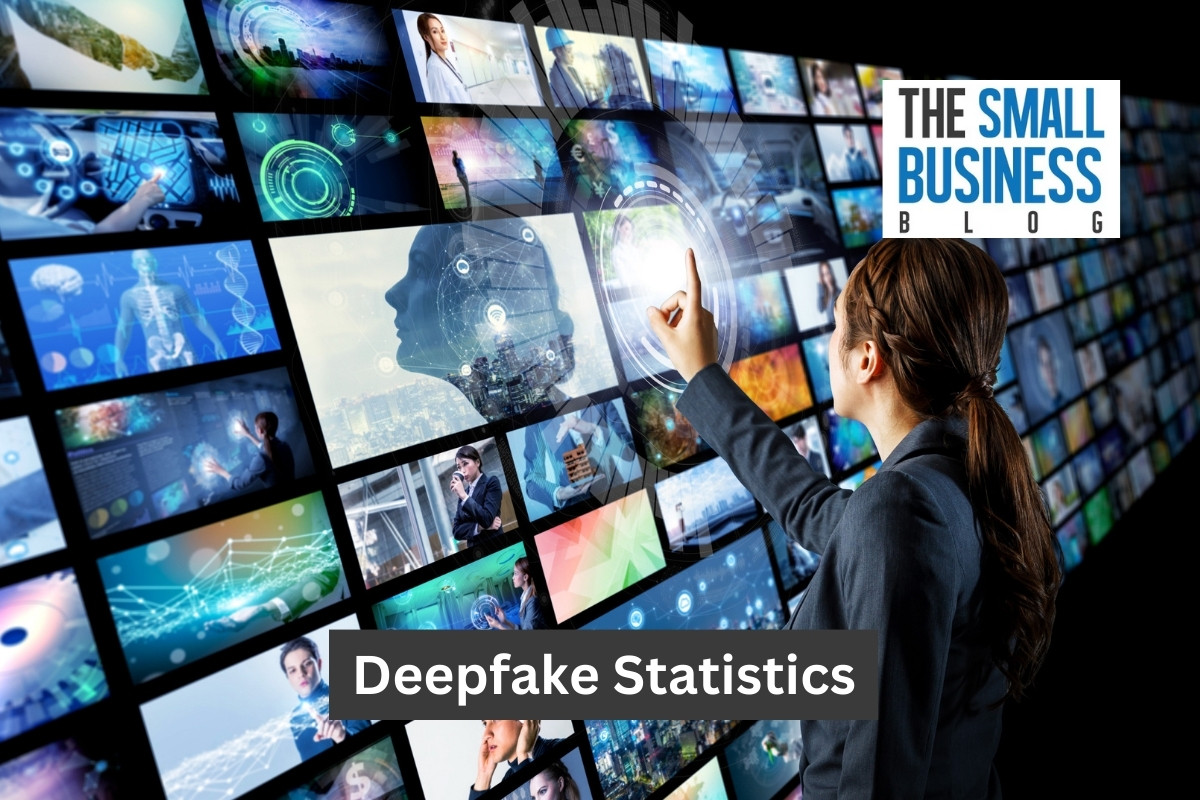Technology is evolving in many different ways at a rapid pace, and this can be seen clear as day in various deepfake statistics.
Deepfake videos manipulate video content to superimpose or entirely replace the facial features of one person onto another.
Of course, this has led to plenty of hilarity, but it’s also cause for an equal amount of concern.
Insights tell us that there will be roughly 500,000 deepfake videos circulating social media throughout 2023.
The people creating deepfake content aren’t all doing it with malicious intent, as this technology has many creative applications.
However, the potential risks and identity concerns shouldn’t be ignored.
Nevertheless, this article will focus on many statistics regarding deepfake technology and its increasing prevalence in our everyday lives.
Post Contents
Key Statistics
- Over 70% of respondents have no idea what deepfake technology is
- More than 95% of all deepfake videos are created with DeepFaceLab
- From 2022 to Q1 of 2023, the proportion of deepfakes increased from 0.2% to 2.6%
- As of 2023, 57% of consumers are confident they could detect a deepfake video
- 15% of Americans admit to encountering altered media on a regular basis
- 43% have reduced their news intake due to complications with believable media
- 77% of both Republican and Democrat leaders support restrictions on altered videos
- Around 9% of global respondents think that deepfakes aren’t good enough to trick anyone
Deepfake Statistics: A Glaring Reality
Most people have one of three thoughts when they see a deepfake video for the first time.
They either don’t notice at all, think it’s extremely funny, or they’re entirely scared by the possibilities.
All are warranted reactions, as deepfake tech is still fairly new to a lot of people.
Although this is true, the technology has been around for years already, and it’s capable of some pretty amazing feats.
Most of the deepfake content you come across is harmless, but statistics show there are many unique opinions about the technology.
What’s more interesting is the various ways the technology is being used to manipulate audiences.

1. Most People Don’t Know What Deepfake Is
This isn’t much of a surprise, as most rising technologies come with a slow adoption rate.
Based on recent statistics, about 70% of respondents have no idea what deepfake is.
Considering that note, you can imagine it would probably be easy to trick these people with deepfake content as well.
Not everyone is up to speed with trending tech, but deepfake is something everyone will need to be aware of.
The capabilities of it can be dangerous, and without proper education, people are bound to fall for it time and time again.
Less than a third of global consumers are aware of deepfake tech.
Even many of those who know about the technology still have a hard time recognizing it.
With hundreds of thousands of deepfake videos on the internet, this makes you wonder who’s creating these videos and what software they are using to do it.
(EDSmart)
2. How are Deepfake Video Made?
There are many different ways a deepfake video can be created, but not everyone has the skillset to make it happen.
You can find a variety of deepfake services online, but statistics show that about 95% of all deepfake videos are created with DeepFaceLab.
Clearly a leader in their industry, these types of services are what allow everyday people to create deepfake videos.
You don’t need any editing skills to get it done, which is why so many videos are popping up across the internet.
With more than one reason supporting the rise of deepfake content, it isn’t something that we’ll be able to stop in its tracks.
At this point, education is the most important, as deepfake videos will only become more common down the road.
(EDSmart)
3. The Amount of Deepfake Content is Increasing
It was only a few years ago when deepfake content was a rare occurrence on social media.
Now, it isn’t all that hard to find.
If you take a look at data pulled from 2022 to Q1 of 2023, you’ll find that the proportion of deepfake content on the web increased from 0.2% to 2.6%.
This may seem like a small jump, but it’s actually staggering when you consider what’s to come.
Eventually, deepfake content will be entirely unavoidable, and it’ll become another sizable security concern we all have to keep in mind.
Issues with personal security are already an issue when it comes to deepfake videos.
With the technology, there are plenty of people in the world who are hard at work committing identity theft and fraud.
Since we can’t stop the existence of deepfake tech, people will have to arm themselves with the knowledge and tools necessary to combat it.
Even some of the most tech-savvy people are fooled by deepfakes, which means it’ll definitely trick the average person.
(SumSub)
4. Can you Detect a Deepfake Video?
Most people think of themselves as relatively in tune with modern technology, but deepfake has a unique way of humbling that thought.
Surprisingly, 57% of global respondents think they could detect any deepfake video in front of them.
This may be true for some, but definitely not for every one of the respondents.
In the early days of deepfake content, it was pretty easy to tell that something was a bit off about what you were looking at.
In its current state, it’s nearly impossible to tell the difference.
With over half of respondents confident in their ability to detect deepfake content, this tells us that many people have yet to truly understand the tech’s capabilities.
It’s true that some deepfake content is more believable than others, but audiences have proven it doesn’t take much to fool them.
This is exactly why there are so many security concerns surrounding the technology.
(Statista)
5. Encountering Altered Media Isn’t So Uncommon
With all of the different tools that are available, almost anyone can create altered media on their own.
As deepfake content becomes easier to make, we’re guaranteed to see a lot more of it hit the internet.
Around 15% of Americans admit to seeing altered media on a daily basis.
When you take into account how algorithms work, most of these people more than likely just stumbled across some deepfake content.
As time moves forward, we’ll start to see deepfake content become more normalized.
Right now, it’s still in an era of exploration, testing the limit of what it can do to different forms of media.
(EDSmart)
Niche Statistics on Deepfake Tech
The data mentioned above provides a general overview of the situation, but it doesn’t really get into the fine print.
Deepfake tech affects our lives in multiple ways, and data shows that this is already starting to happen across various demographics.
While some people are excited about the technology, others are terrified of what it might become.
At this time, we’re going through a baby phase with deepfake tech.
Eventually, deepfake tech will be a primary topic of discussion due to global security concerns regarding identity.
6. Deepfakes are Gaining Global Attention
When a technology like this comes along, word is going to spread like wildfire.
This means that countries all over are catching onto the technology, at their own rate, of course.
The chart below highlights the percentage of people who have or haven’t heard of deepfake tech.
It covers several different countries, and you’ll notice that the data is pretty consistent across the board, with there being one outlier.
Based on this particular data set, it seems there are plenty of people in Mexico who are well aware of what deepfake is.
Each country is going through its own learning curve, although it’s evident that some regions are catching on faster than others.
You also want to factor in the generation gap.
Most older people will take longer to learn about deepfake tech, let alone recognize it on social media.
(iProov)
7. Deepfake Stats in the U.S.
You can assume that many people are using the United States as a testing ground for deepfake technology.
Not only are consumers eating it up, but many are blinded by the entertainment to see the potential complications.
Due to the false nature of deepfake content, it has made many other forms of content hard to digest.
For example, around 43% of Americans have reduced their news intake due to the rise of deepfake tech.
Many people can’t discern if what they’re seeing is real or not, so they’d rather just avoid it altogether.
I’m confident that a significant portion of that percentage is a younger demographic.
Many older folks prefer to stick to what they know, which means listening to the news on the TV.
The problem here is that old people can be blindly trusting at times, especially when it comes to news anchors.
With deepfake tech, someone could manipulate the opinions and ideas of thousands, if not millions of people.
(PewResearchCenter)
8. The Biggest Concerns About Deepfake Tech
Security is just one concern when it comes to deepfake technology.
There are actually a long list of worries associated with the topic.
If you were to ask different people, you’re guaranteed to get different sentiments.
However, most people have some kind of underlying fear of the technology and where it’s headed.
Keep in mind that these numbers are referencing global data, and they’ll look much different if you break them down by individual countries.
Overall, it looks like most people are simply worried about identity theft, and rightfully so.
Deepfake tech can easily lead to identity theft for many people if left unchecked.
Although identity theft is the main concern with deepfakes, people are more concerned with specific outcomes.
It’s understandable, as no one wants their personal identity and bank account information compromised for any reason.
(iProov)
9. The Public’s Personal Thoughts on Deepfakes
For the most part, people are on the fence about deepfake technology.
Even if there are people who are excited about it, there’s still an underlying fear about what’s possible with the tech in the near future.
The ruling is that most people aren’t a fan of deepfakes, and they wish it didn’t exist at all.
In the chart below, you can get a look at more specific comments from the public about deepfake technology.
Once again, this data is taken from a global point of view.
While a small percentage of people find the tech to be harmless, the majority are on the other end of the spectrum.
Deepfake is something that’ll require some kind of oversight, but it won’t be stopped by any means.
It’s just another way technology has made us more vulnerable in an online world.
(iProov)
10. Who’s Tackling the Issues?
As concerns among the public continue to grow regarding deepfake tech, many people are wondering who’s going to tackle these various security concerns.
There are a few ideas as to who should provide oversight, but there still isn’t a concrete answer to the problem.
- 9% of respondents feel tech companies should get a reign on things
- 12% think the responsibility should land on the government
- While 53% of respondents believe journalists should take the lead in combating fake news
Of course, these are merely ideas, and there isn’t a single approach that’ll eliminate concerns about deepfake content.
It’ll take a lot more conversation, trial, and error before society gets to a point where deepfake is under control, if that ever actually happens.
At this time, deepfake content is definitely on the rise, but it hasn’t hit catastrophic levels just yet.
There are many people who are still pretty much oblivious to the technology’s existence, but it won’t take long before that changes across various parts of the world.
(EDSmart)
How Deepfake is Affecting American Society

A majority of the statistics in this article are focused on global numbers.
When you take the topic and slim it down to one country, you can see how the tech is affecting citizens in a variety of ways.
Many Americans have strong opinions in general, and this is found in most stats regarding Americans’ thoughts on deepfake technology.
Although you’ll find many different opinions, the general consensus is that most people don’t want anything to do with deepfake content.
11. What do Americans Think about Deepfakes?
In short, most Americans aren’t a fan that deepfake content is on the rise.
77% of Americans agree that restrictions should be in place for deepfake videos.
Then again, 22% of U.S. citizens think their freedom to create and post deepfake content should be protected.
While some are simply voicing their concerns, others are already being directly affected by the technology.
You might be surprised at some of the statistics that stem from the increased presence of deepfake content.
There’s always going to be a demographic of people who are 100% in favor of new tech, but that isn’t the case in this circumstance.
Most technologies tend to evolve pretty fast, and as usual, deepfake content is moving quicker than people reacting to it.
12. The Everday Impact on Americans
Due to the rise in deepfake content, roughly 52% of Americans have changed the way they navigate social media as a whole.
On top of that, 43% of people in the U.S. have reduced their news intake significantly.
Part of this is due to the fact that there’s a lot of fake news and fear-mongering in American news that’s simply unnecessary.
There’s still a decent percentage of people in the U.S. who barely ever come across any deepfake media.
33% of people fall into this category.
With 63% of Americans agreeing that deepfake content could lead to a lot of public confusion, this likely stems from the uptick in deepfake-based scams we’ve seen in recent years.
In 2020 alone, there was a 300% increase in fraud attempts that used deepfake tech.
Most people accept that the technology can’t be stopped, but statistics show there’s still a substantial learning curve the public will have to go through.
(EDSmart)
13. Risks in the Political Landscape
One of the biggest concerns surrounding deepfake tech is identity fraud, considering it’s only becoming much easier to accomplish.
This can be damaging for anyone, but it has drummed up conversation around deepfake content and influential figures like politicians.
Here are a few statistics on how deepfake tech is affecting politics in America:
- 73% of people are seeing a lot of fake news specifically geared toward politics and elections
- 68% admit that deepfake content can easily impact confidence in the government
- 54% agree that the technology is causing distrust and impacting confidence between citizens
Unfortunately, there is still a large demographic of people who don’t understand the nuances of technologies like deepfaking.
Many people can be easily fooled, and this can be dangerous when it comes to the figures they listen to the most.
We’ve already seen deepfake content being used maliciously, and it’s expected that these occurrences will become more common in the near future.
Another issue that stems from deepfake content is that blame can sometimes end up being pointed at the wrong person.
This ties into fake news.
People will believe the lie and then defend that lie because they feel like they saw the truth with their own eyes.
We’ve seen a lot of heated discussions between people over such circumstances in recent years, which is why education on technology is so important.
(EDSmart)
14. Who’s to Blame for Fake News?

The reality is that most people end up blaming the wrong person for the source of fake news.
Statistics show that political leaders are blamed the most for fake news, sitting at 57%.
Activist groups are right behind them at 53%, and journalists are next in line at 36%.
Although some people in these professions are to blame for some fake news, they aren’t the source of all of it.
Once again, deepfake tech can be used to frame an individual for the cause of something.
Since it’s on video, most everyday people will be inclined to believe what they’re seeing.
When you also take into account how artificial intelligence is being used nowadays, cloning the voices of other people is easier than ever.
So, if you mix deepfake videos with faked voiceovers, most people won’t see any other reason not to believe what they’re seeing and hearing.
The world has seen the effects of this issue for quite a few years now.
Where most concerns lie in this area is how we’re going to get a rein on this issue before it’s completely out of control.
(PewResearch)
15. People are Looking for Ways to Protect Themselves
Considering how fast deepfake content is evolving, people are looking for the best way to protect their identity against the technology.
Statistics show that, globally, over 80% of respondents said they’re more likely to use an online service that puts deepfake prevention measures in place.
You’ll also start seeing specific services pop up that help people search for deepfake content with their identity and a variety of other ways to fight against the technology.
Some security measures that experts are exploring include biometric authentication and liveness detection.
It may seem exhausting that we live in a world that requires so many security measures, but this is what we have to do to stand a chance against new technologies.
A majority of the world is in agreeance that multiple security measures should be in place to defend against deepfake content.
At this time, the world is still in its infancy in regard to education on the matter.
(iProov)
Final Thoughts
Deepfake content may be a scary thought, but this isn’t the first time the world has had to adapt to new technologies.
Sure, it may cause some problems, but it also makes for a good amount of entertainment when used in the right context.
People will continue to fight against the rise of deepfake tech, but the best we can do is get security measures in place as soon as possible.
This article offers a better understanding of deepfake statistics, so you’re more prepared for what the future holds for our everyday lives.






























